Abstract
Alafosfalin is a phosphonodipeptide with significant activity as an antibacterial agent and as a potentiator of beta-lactam antibiotics. Studies in humans showed that oral doses of 50 to 2,500 mg were well absorbed, but some metabolic hydrolysis occurred before the drug reached the general circulation. Oral bioavailability was approximately 50% and was largely independent of dose. Alafosfalin has an elimination half-life of about 60 min and does not accumulate during chronic administration. Healthy volunteers excreted intact phosphonodipeptide in the urine. The recovery was dose dependent and increase from 6 +/- 1% after 50-mg doses to 17 +/- 1% after 2,500-mg doses. This change with dose occurred because the human kidney has a small, saturable capacity for reabsorbing the phosphonopeptide. Less alafosfalin was excreted in the urine of subjects with impaired glomerular function. When alafosfalin was coadministered with cephalexin, both compounds wer absorbed, distributed, and eliminated at virtually identical rates. Oral administration of 500 mg of the phosphonodipeptide plus 250 mg of the beta-lactam antibiotic gave approximately equal concentrations of the drugs in plasma, with a fourfold excess of cephalexin in the urine. This 2:1 combination is being tested in the clinic.
Full text
PDF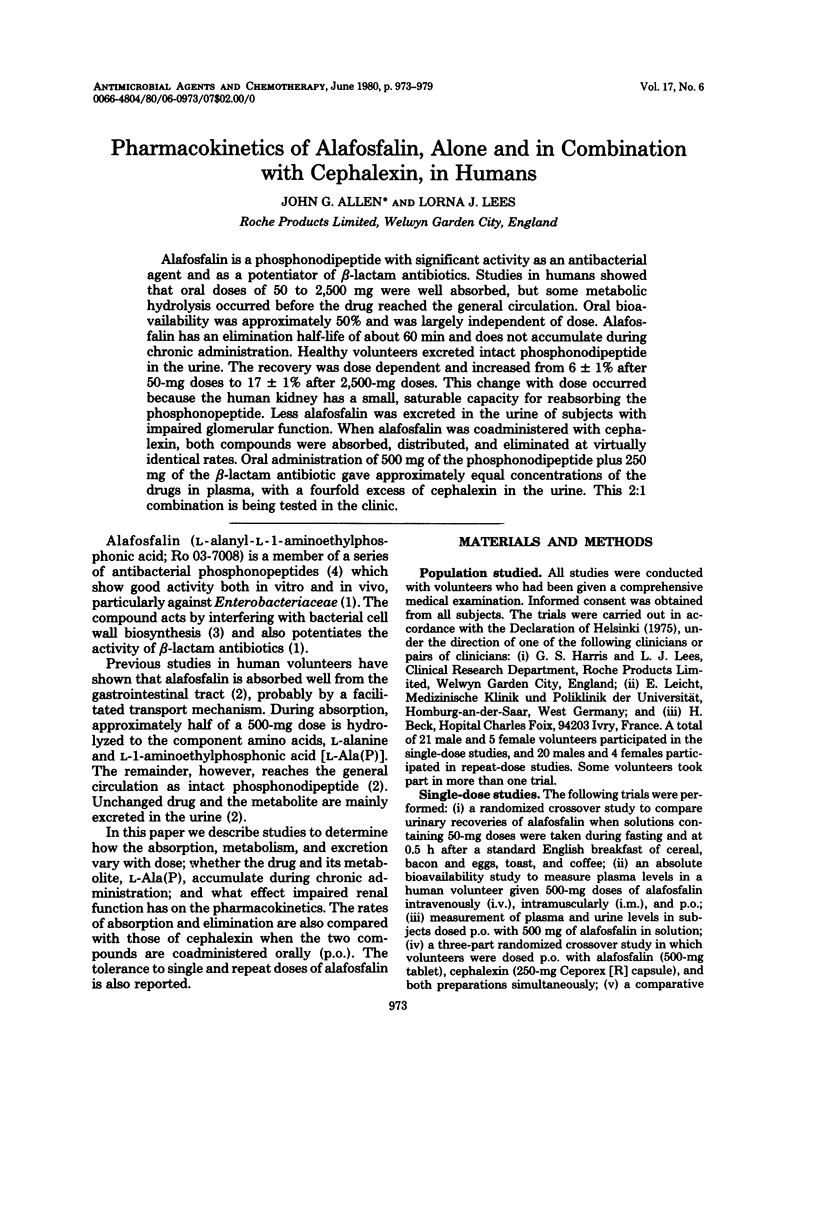
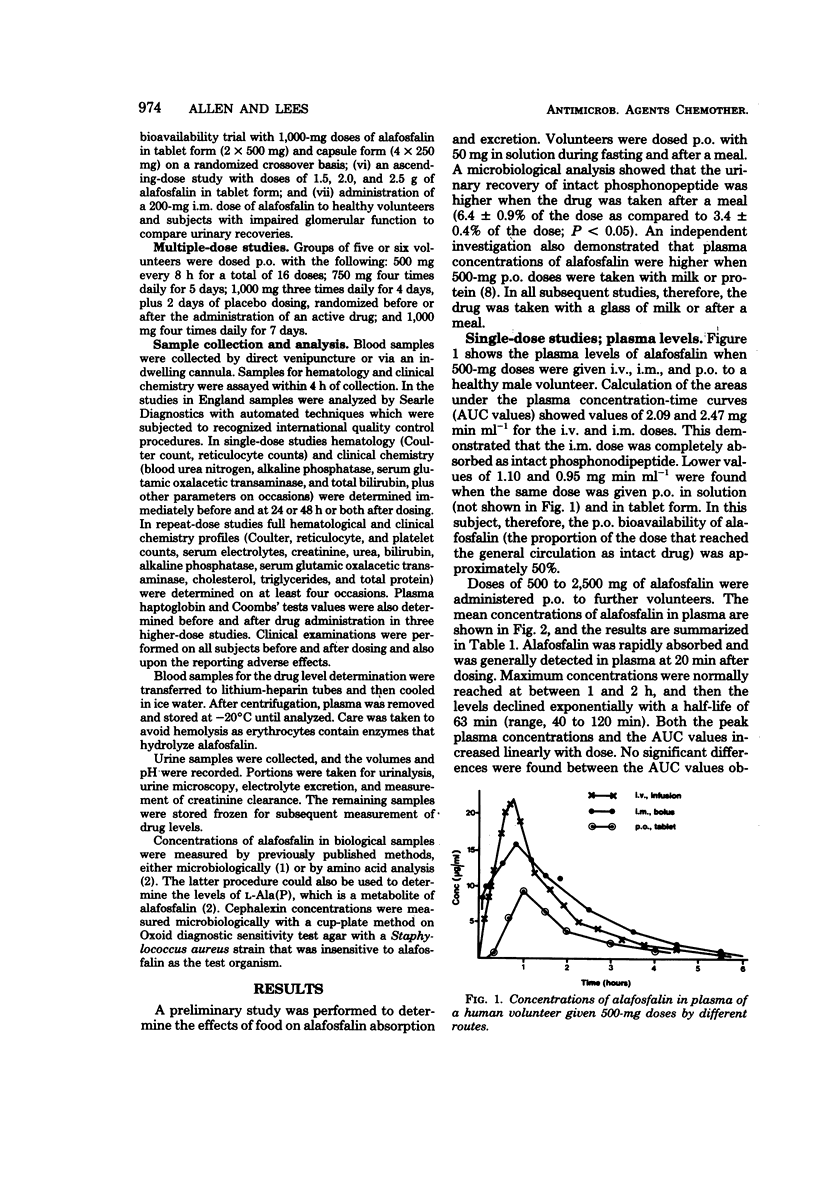
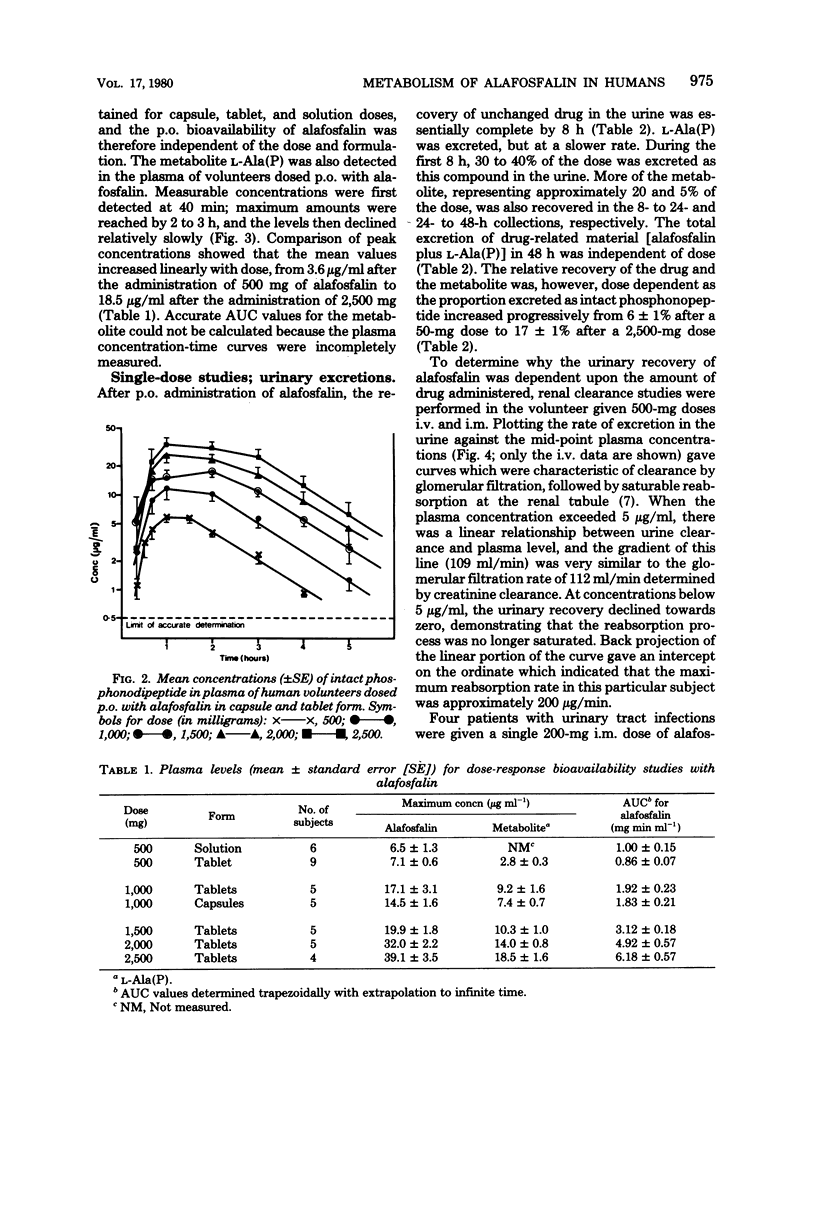
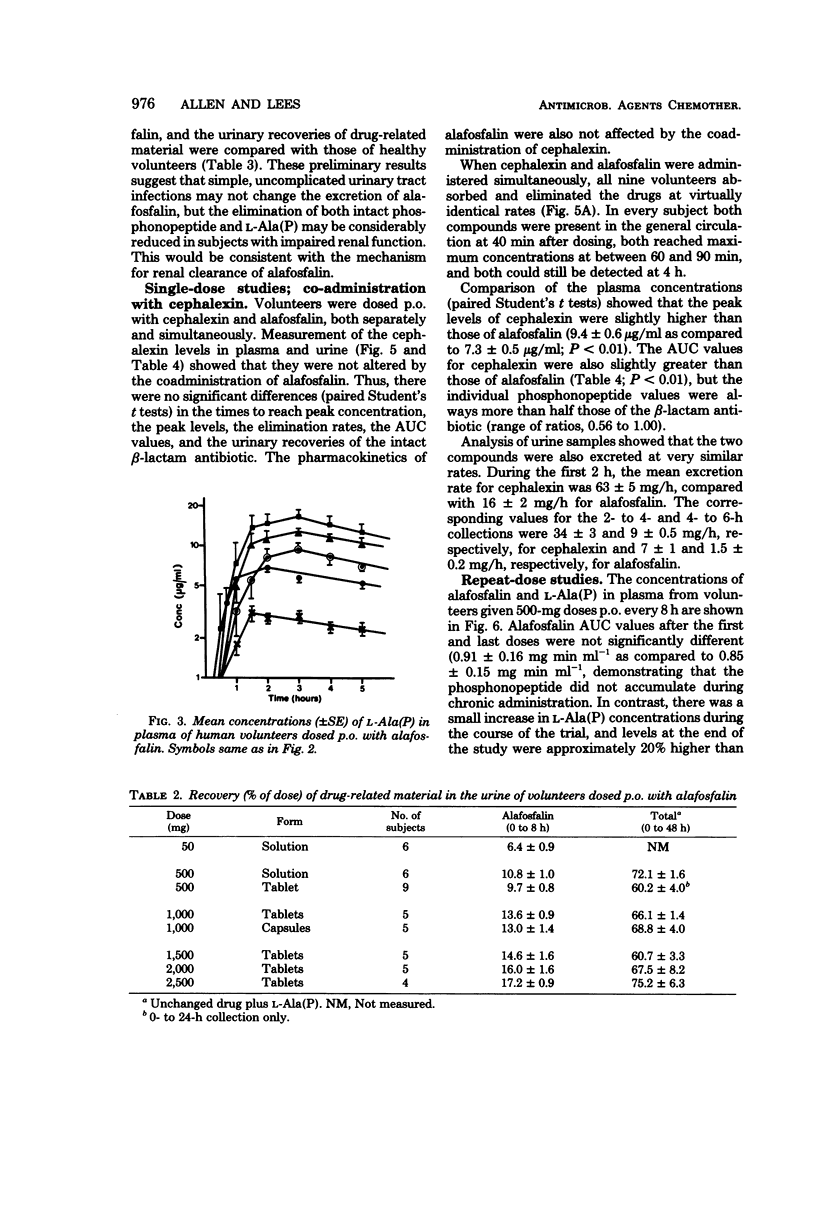
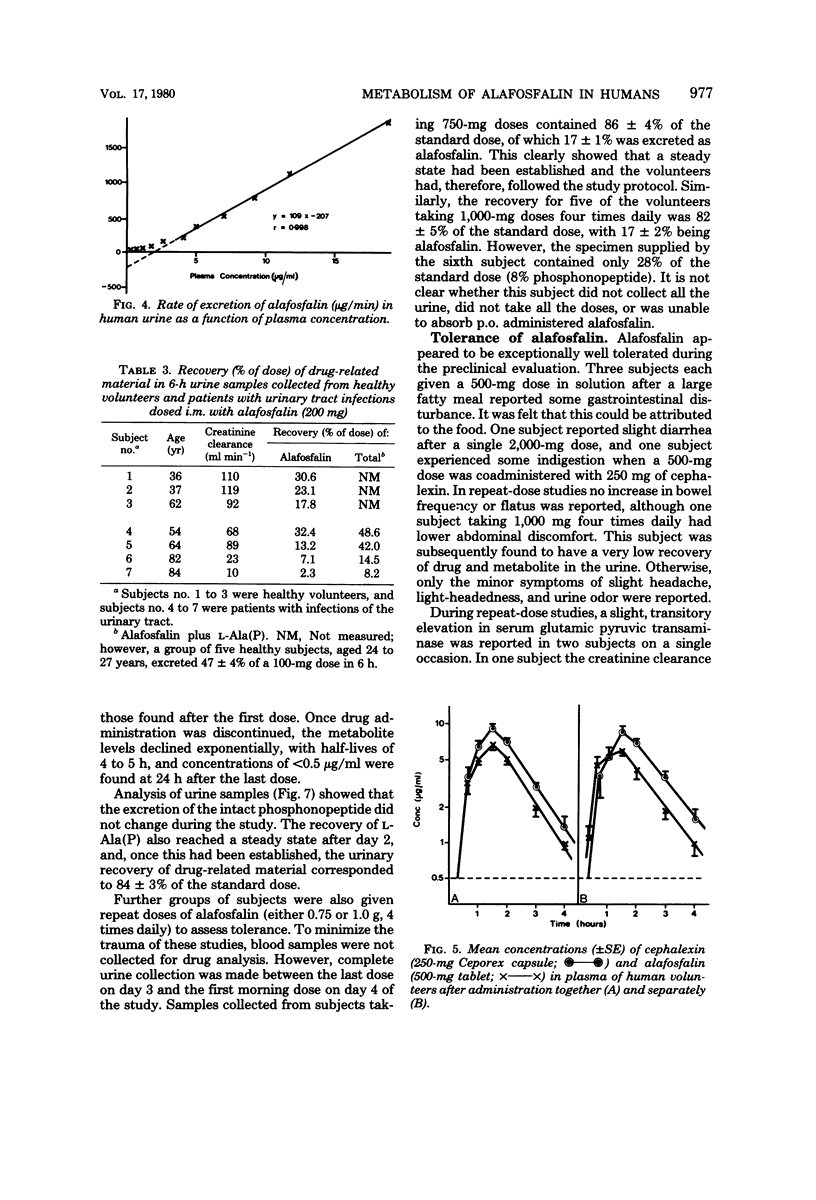
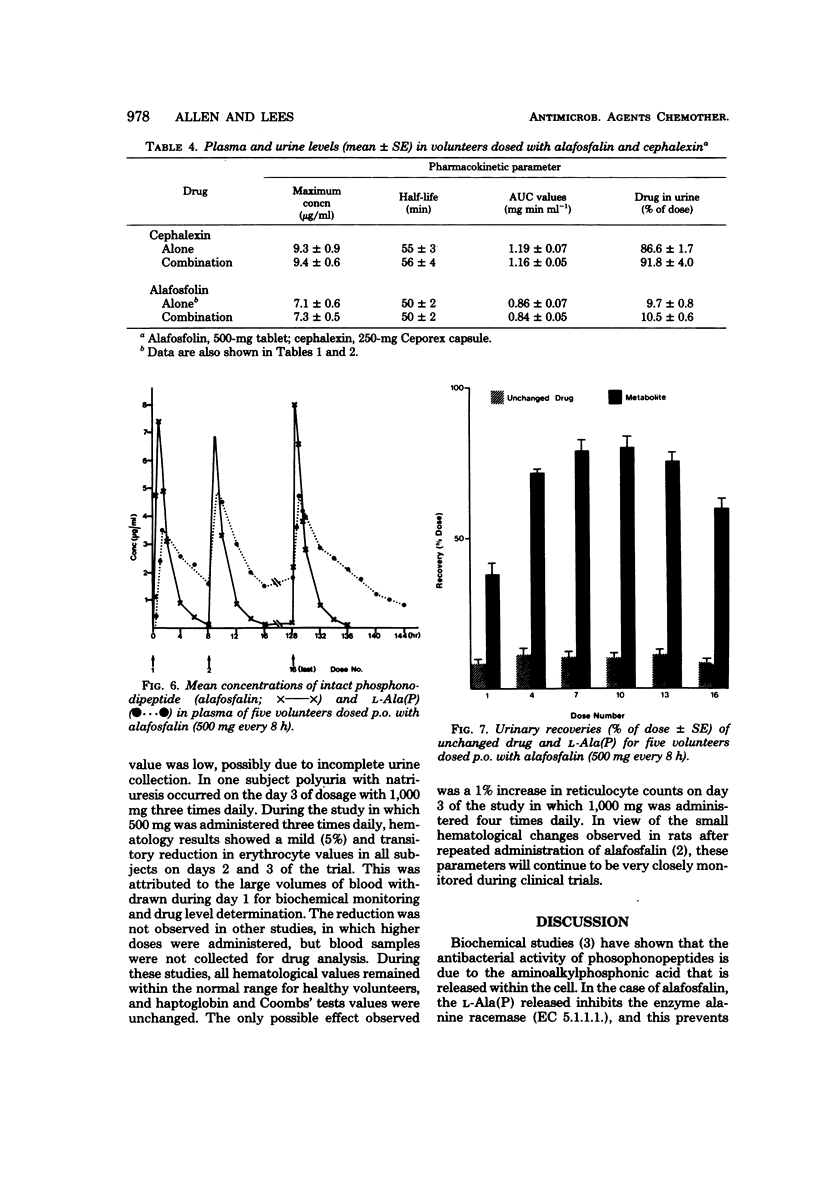
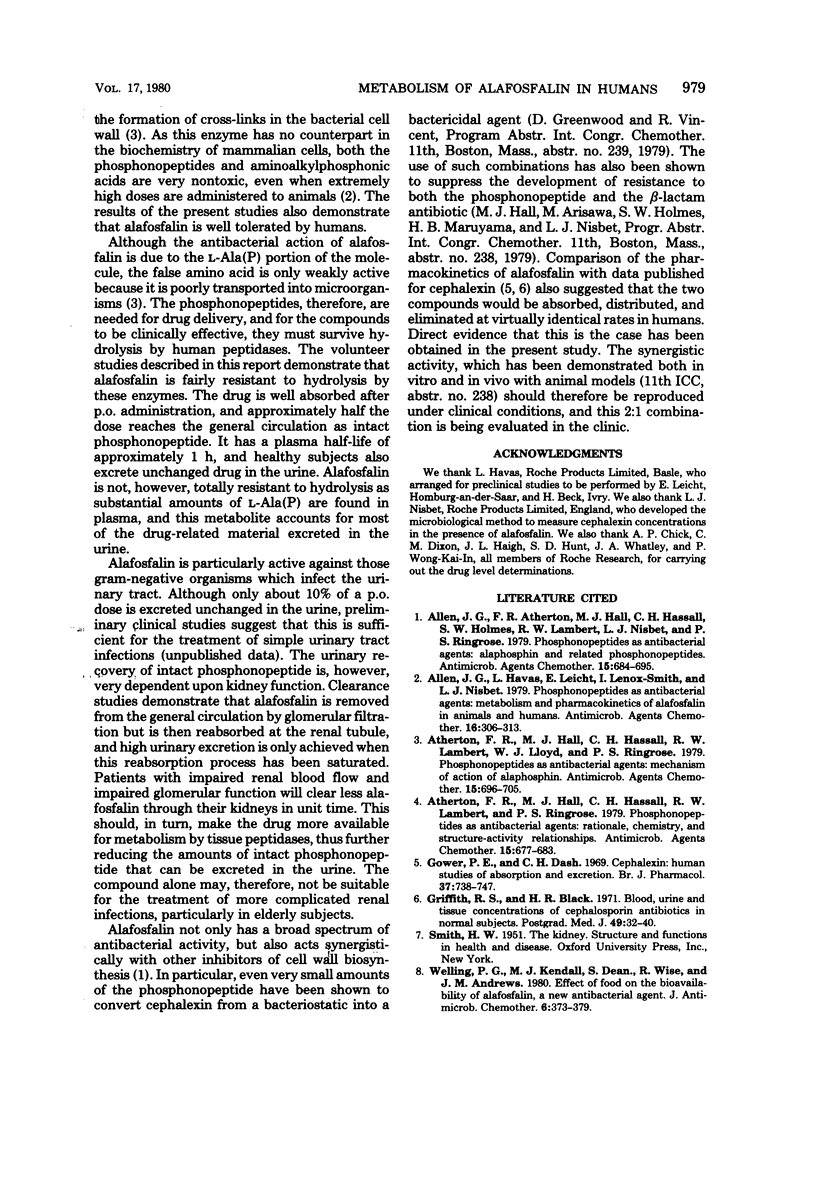
Selected References
These references are in PubMed. This may not be the complete list of references from this article.
- Allen J. G., Atherton F. R., Hall M. J., Hassall C. H., Holmes S. W., Lambert R. W., Nisbet L. J., Ringrose P. S. Phosphonopeptides as antibacterial agents: alaphosphin and related phosphonopeptides. Antimicrob Agents Chemother. 1979 May;15(5):684–695. doi: 10.1128/aac.15.5.684. [DOI] [PMC free article] [PubMed] [Google Scholar]
- Allen J. G., Havas L., Leicht E., Lenox-Smith I., Nisbet L. J. Phosphonopeptides as antibacterial agents: metabolism and pharmacokinetics of alafosfalin in animals and humans. Antimicrob Agents Chemother. 1979 Sep;16(3):306–313. doi: 10.1128/aac.16.3.306. [DOI] [PMC free article] [PubMed] [Google Scholar]
- Atherton F. R., Hall M. J., Hassall C. H., Lambert R. W., Lloyd W. J., Ringrose P. S. Phosphonopeptides as antibacterial agents: mechanism of action of alaphosphin. Antimicrob Agents Chemother. 1979 May;15(5):696–705. doi: 10.1128/aac.15.5.696. [DOI] [PMC free article] [PubMed] [Google Scholar]
- Atherton F. R., Hall M. J., Hassall C. H., Lambert R. W., Ringrose P. S. Phosphonopeptides as antibacterial agents: rationale, chemistry, and structure-activity relationships. Antimicrob Agents Chemother. 1979 May;15(5):677–683. doi: 10.1128/aac.15.5.677. [DOI] [PMC free article] [PubMed] [Google Scholar]
- Gower P. E., Dash C. H. Cephalexin: human studies of absorption and excretion of a new cephalosporin antibiotic. Br J Pharmacol. 1969 Nov;37(3):738–747. doi: 10.1111/j.1476-5381.1969.tb08513.x. [DOI] [PMC free article] [PubMed] [Google Scholar]
- Griffith R. S., Black H. R. Blood, urine and tissue concentrations of the cephalosporin antibiotics in normal subjects. Postgrad Med J. 1971 Feb;47(Suppl):32–40. [PubMed] [Google Scholar]
- Welling P. G., Kendall M. J., Dean S., Wise R., Andrews J. M. Effect of food on the bioavailability of alafosfalin, a new antibacterial agent. J Antimicrob Chemother. 1980 May;6(3):373–379. doi: 10.1093/jac/6.3.373. [DOI] [PubMed] [Google Scholar]


